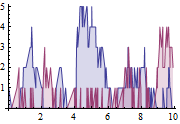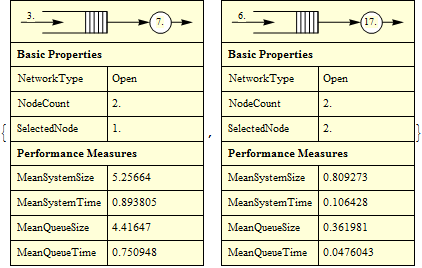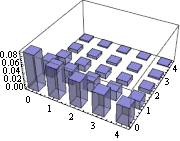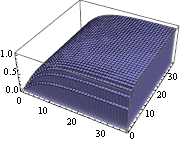Analyze the Performance of a Queueing Network
Define an open queueing network.
| In[1]:= |  X |
| In[2]:= | X |
Simulate the network.
| In[3]:= | X |
Plot the simulated values at the nodes in the network.
| In[4]:= | X |
| Out[4]= |  |
Performance measures at the nodes in the network.
| In[5]:= | X |
| Out[5]= |  |
Stationary distribution for the network.
| In[6]:= | X |
Probability density function for the steady state of the network.
| In[7]:= | X |
| Out[7]= |
| In[8]:= | X |
| Out[8]= |  |
Cumulative distribution function for the steady state of the network.
| In[9]:= | X |
| Out[9]= |
| In[10]:= | X |
| Out[10]= |  |